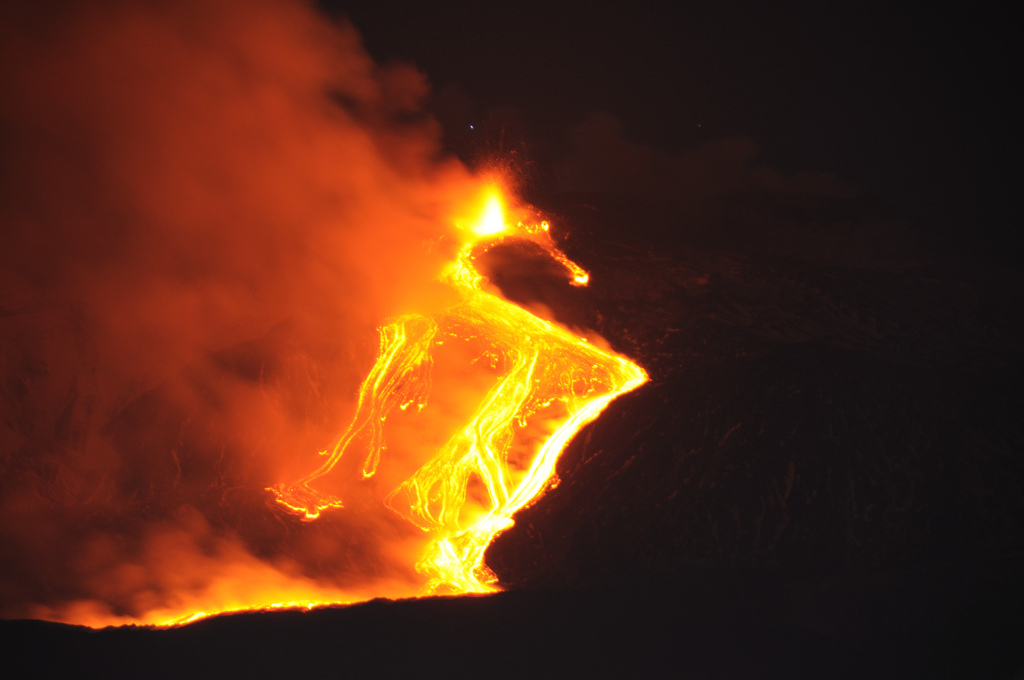New Scientist
Image: gnuckx
The fate of the dinosaurs may have been sealed half a billion years before life even appeared, by two geological time bombs that still lurk near our planet’s core.
A controversial new hypothesis links massive eruptions of lava that coincided with many of Earth’s largest extinctions to two unusually hot blobs of mantle 2800 kilometres beneath the crust. The blobs formed just after the Earth itself, 4.5 billion years ago. If the hypothesis is correct, they have sporadically burst through the planet’s crust, creating enormous oceans of lava which poisoned the atmosphere and wiped out entire branches of the tree of life.
Debates still rage over what caused different mass extinctions, including the one that wiped out the dinosaurs. An asteroid that smashed into Earth 65 million years ago is no doubt partially to blame for the Cretaceous giants’ demise. But a less-known school of thought has it that this and other extinctions occurred when cracks in the crust let huge amounts of lava gush from the bowels of the Earth. Each event flooded at least 100,000 square kilometres, leaving behind distinct geological regions known as large igneous provinces (LIPs), such as India’s Deccan traps, formed when the dinosaurs went extinct (see map). “There is an amazing correlation between mass extinctions and LIPs,” says Andrew Kerr at the University of Cardiff, UK.
Now Matthew Jackson at Boston University, and colleagues, claim to have found evidence that LIPs are fed by 4.5-billion-year-old stores of mantle. Read more on newscientist.com…








